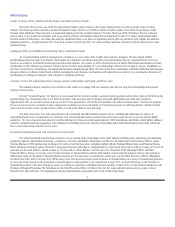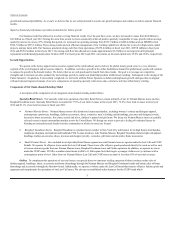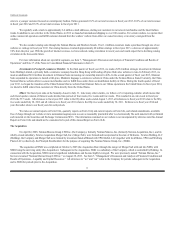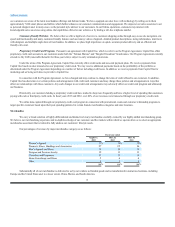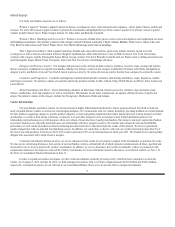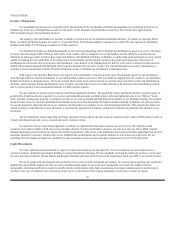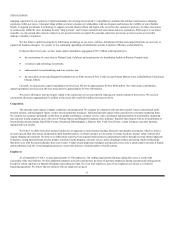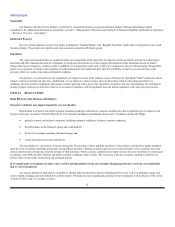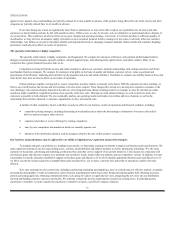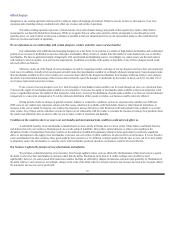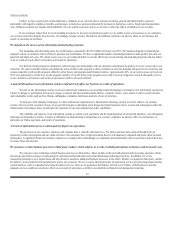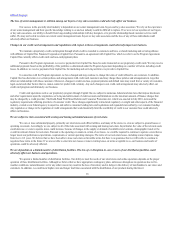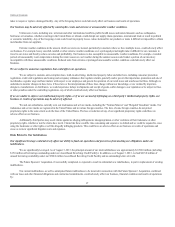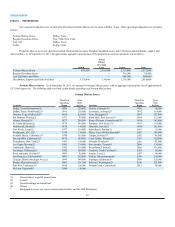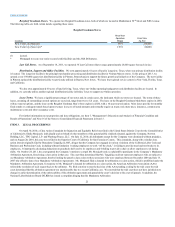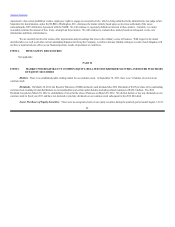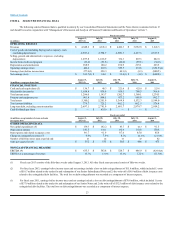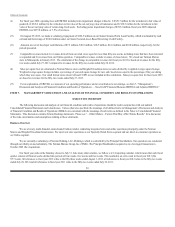Neiman Marcus 2012 Annual Report Download - page 16
Download and view the complete annual report
Please find page 16 of the 2012 Neiman Marcus annual report below. You can navigate through the pages in the report by either clicking on the pages listed below, or by using the keyword search tool below to find specific information within the annual report.
Table of Contents
disruptions to our existing operations and succeed in creating an improved shopping environment. Failure to execute on these or other aspects of our store
expansion and remodeling strategy could adversely affect our revenues and results of operations.
Our online retailing operation represents a critical element of our omni-channel strategy and growth of that segment may replace, rather than be
incremental to, our Specialty Retail Stores businesses. While we recognize that our online sales cannot be entirely incremental to sales through our retail
specialty stores, we seek to attract as many new customers as possible to both our channels and if we are not successful in doing so, this could adversely
affect our revenues and results of operations.
We are dependent on our relationships with certain designers, vendors and other sources of merchandise.
Our relationships with established and emerging designers are a key factor in our position as a retailer of high-fashion merchandise and a substantial
portion of our revenues is attributable to our sales of designer merchandise. Many of our key vendors limit the number of retail channels they use to sell their
merchandise. We have no guaranteed supply arrangements with our principal merchandising sources. Accordingly, we cannot assure you that such sources
will continue to meet our quality, style and volume requirements. In addition, any decline in the quality or popularity of any of these designer brands could
adversely affect our business.
Moreover, nearly all of the brands of our top designers are sold by competing retailers, and many of our top designers also have their own proprietary
retail stores. In addition, virtually all of our designers currently make their merchandise available to us through wholesale arrangements. Some designers make
their merchandise available to all or select retailers on a concession basis whereby the designer merchandises their boutique within the retailer’s store and pays
the retailer a pre-determined percentage of the revenues derived from the sale of the designer’s merchandise by the retailer. In fiscal year 2013, less than 1% of
our revenues represented concession revenues.
If one or more of our top designers were to 1) limit the supply of merchandise made available to us for resale through our stores on a wholesale basis,
2) increase the supply of merchandise made available to our competitors, 3) increase the supply of merchandise made available to their own proprietary retail
stores or significantly increase the number of their proprietary retail stores, 4) convert the distribution of goods made available to us from our current wholesale
arrangement to a concession arrangement or 5) exit the wholesale distribution of their goods to retailers, our business could be adversely affected.
During periods of adverse changes in general economic, industry or competitive conditions, such as we experienced in calendar years 2008 and
2009, some of our vendors may experience serious cash flow issues, reductions in available credit from banks, factors or other financial institutions, or
increases in the cost of capital. In response, our vendors may attempt to increase their prices, alter historical credit and payment terms available to us or take
other actions. Any of these actions could have an adverse impact on our relationship with the vendor or constrain the amounts or timing of our purchases from
the vendor and, ultimately, have an adverse effect on our revenues, results of operations and liquidity.
Conditions in the countries where we source our merchandise and international trade conditions could adversely affect us.
A substantial majority of our merchandise is manufactured overseas, mostly in Europe and, to a lesser extent, China, Mexico and South America,
and delivered to us by our vendors as finished goods. As a result, political instability, labor strikes, natural disasters or other events resulting in the
disruption of trade or transportation from other countries or the imposition of additional regulations relating to duties upon imports could cause significant
delays or interruptions in the supply of our merchandise or increase our costs, either of which could have an adverse effect on our business. If we are forced to
source merchandise from other countries, those goods might be more expensive or of a different or inferior quality from the ones we now sell. If we were unable
to adequately replace the merchandise we currently source with merchandise produced elsewhere, our business could be adversely affected.
Our business is affected by foreign currency fluctuations and inflation.
We purchase a substantial portion of our inventory from foreign suppliers whose costs are affected by the fluctuation of their local currency against
the dollar or who price their merchandise in currencies other than the dollar. Fluctuations in the Euro-U.S. dollar exchange rate can affect us most
significantly; however, we source goods from numerous countries and thus are affected by changes in numerous currencies and, generally, by fluctuations in
the dollar relative to such currencies. Accordingly, changes in the value of the dollar relative to foreign currencies may increase the retail prices of goods offered
for sale and/or increase our cost of goods sold.
14


